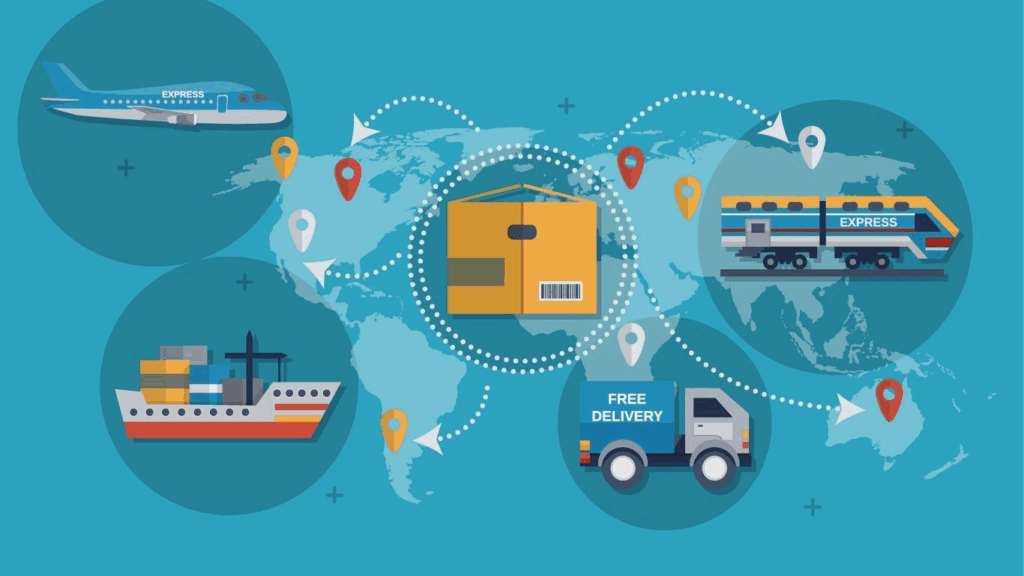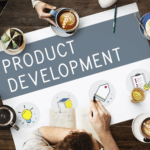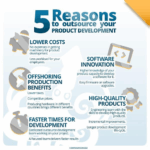The Backbone of Business Success
A robust supply chain is the unsung hero that makes a business thrive. It is the fuel of every growth; it drives down the cost and churns out customers with high satisfaction. Good supply chains work like magic; bad supply chains cause delays, inventory pile-ups, and customer dissatisfaction, thus stopping companies from growing.
The bottom line is that a well-run supply chain will help your company get 15% higher growth compared to those stuck with inefficient supply chain networks. Fashion, electronic goods, fresh produce-whatever the product-must have a supply chain that can deliver and create happy customers. But how do you pick the right one?
Let’s get into it.
Understanding Supply Chains
A typical definition of a supply chain refers to the backbone of a business. But this is not about getting products from A to B. It involves everything that happens in between: the sourcing of raw materials, the manufacturing process, storage of finished goods, and finally, delivering them to customers, panels that create a pathway through which operations can go smoothly. A properly established supply chain can save operational costs by at least 10%, hence very key to long-term success. The new technology allows for fast tracking and smart logistics at the lowest price ever.
Traditional Supply Chains
Characteristics of many traditional supply chains are linear, with easy-to-follow steps. Though this chain has another name from before, it nevertheless has many handicaps. Disruptions, by nature- whether it be weather, strikes, or unforeseen new issues- can stymie operations into inefficiencies and delays.
Modern Supply Chains
By contrast, modern supply chains are built on top of technologies, real-time tracking, and data analytics. Thus, innovations provide increased responsiveness, flexibility, and efficiency. AI, automation, and digital logistics make the supply chain agile and precise.
Global vs. Local Supply Chains: The Global Reach vs. Local Touch Debate
Global Supply Chains
Global supply chains take advantage of the cost benefits that come from sourcing materials and products from all over the world. But they come with their own set of challenges—shipping delays, tariffs, and longer lead times, to name a few.
Local Supply Chains
Local supply chains focus on domestic suppliers, offering faster delivery times, though often at a slightly higher cost. These are the go-to choices when speed matters and you’re aiming to stay ahead of the competition.
Key Factors in Choosing the Right Supply Chain
Product Type and Complexity
Not all products are created equal, and neither are their supply chains. Perishable goods, for example, need a fast, well-controlled delivery system, while luxury items demand careful handling.
Consumer electronics need flexibility, and food products require temperature-controlled storage. Your product type will play a significant role in shaping your supply chain decisions.
Customer Demand and Market Trends
Your supply chain should be as adaptable as your customers’ needs. Items that fly off the shelves in high demand may need real-time tracking, while seasonal products could benefit from scalable solutions. Studies show that demand-driven supply chains can increase sales by as much as 20%.
Cost Considerations
While every business is looking to maximize profits, it’s essential not to sacrifice quality for cost savings. Bad supply chain decisions can hike up costs by as much as 30%.
Focus on areas like transportation, storage, and labor. Bulk shipping, supplier negotiations, and just-in-time inventory can help trim the fat and cut waste.
Speed and Efficiency
In today’s fast-paced world, consumers want it now. A sluggish supply chain can result in lost sales and unhappy customers.
Think Amazon, where speed is king. Companies that implement just-in-time (JIT) inventory systems cut waste and stay nimble, giving them a leg up in the race to meet customer demand.
Sustainability and Ethical Sourcing
Going green is no longer just a nice-to-have; it’s expected. More than 60% of consumers today prefer brands that practice ethical sourcing and sustainability.
From eco-friendly packaging to fair labor practices, customers are paying attention. Although going green may require some upfront investment, it usually pays off in the long run.
Different Supply Chain Models and When to Use Them
Agile Supply Chain: Flexibility at Its Finest
This model is perfect for industries where change is constant. The fashion world, for example, thrives with agile supply chains. Zara’s ability to quickly pivot production based on real-time demand helps reduce waste and increase profits.
Lean Supply Chain: Cutting the Fat
Lean supply chains focus on trimming excess and streamlining processes. Toyota’s famed production system is a classic example of this. By cutting down on inventory and optimizing workflows, businesses can reduce operational costs by as much as 25%.
Flexible Supply Chain: A Mix of the Best
A flexible supply chain combines the best of both worlds, adjusting easily to fluctuating demand. Ideal for industries like consumer electronics, where demand is unpredictable, this model allows businesses to quickly scale up or down without disrupting operations.
Resilient Supply Chain: Weathering the Storm
A resilient supply chain plans for the worst. It can withstand any disruption, be it natural disasters, strikes, or pandemics. The COVID-19 pandemic deeply underscored the reality that organizations with sound contingency plans, for example, those able to resort to their contingency provisions, were the fastest to recover as opposed to those caught off guard.
The Future is Technology and Automation
Utilize technology and automation for better supply chain management. AI-based forecasting can result in a 30% reduction in inventory errors, while blockchain technology can reduce instances of fraud by as much as 50%. It improves transparency and accuracy, providing a smooth flow to your operations.
Supplier Relationship Management: Building Bridges, Not Walls
Maintaining a healthy relationship with suppliers is key. Regular communication, long-term partnerships, and mutual trust help ensure consistent quality and timely delivery. Apple is one example; its strong supplier network ensures quality products are delivered on time.
Inventory and Warehousing Optimization: Maximize Your Storage Operations
Good supply chain management minimizes storage costs while eliminating wastage. Just-in-time is the method that helps in these two issues, making it easier to organize the operations. An example is that Amazon employs automated warehouses for timing order fulfillment and reducing logistical matters.
Logistics and Transportation: Fit for Success
Good logistics are the foundation of an effective supply chain. A good transportation approach impacts every aspect-from costs to speed of delivery. Such an approach of blending air, sea, and land transportation will help keep the supply chain going with no disruptions.
A tracking software application would help map the shipment in real time and provide for smooth and fast deliveries.
Case Studies: Supply Chain Success Stories
H&M: Where Speed Meets Sustainability
H&M has perfected the balance between speed and sustainability, responsibly sourcing raw materials while keeping flexible production cycles to respond to changing fashion trends and ecological commitments. This is an added edge to profitability in the customer’s eye.
McDonald’s: Food Logistics Serenity
With a highly efficient supply chain, McDonald’s excels in food logistics. Just-in-time inventory methods are employed to minimize waste and ensure fresh ingredients at all times. Strong supplier relations guarantee the sourcing of the best-grade ingredients, irrespective of the supply point.
IKEA: Inventory Management Revolutionized
IKEA has revolutionized how businesses manage inventory. Thanks to its efficient warehousing and flat-pack designs, it can save…
Optimizing Your Supply Chain for Long-Term Success
The right supply chain model can help you unlock profitability, customer satisfaction, and steady growth. By evaluating your product needs, customer expectations, and cost factors, you can find the best strategy. Investing in technology, building strong relationships with suppliers, and continuously improving your processes will ensure you stay ahead of the pack.
Looking to take your supply chain to the next level? BrandNewMD offers customized solutions to improve efficiency, cut costs, and keep you ahead in a competitive market. Optimize your supply chain today!
Also, check out these top picks from BNMD, specially curated to enhance your knowledge.












